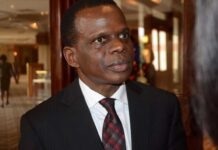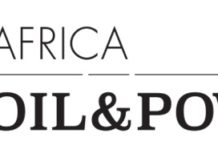The world’s first Green Bond was issued by the World Bank in 2008. By 2017, total Green Bond issuance grew to a record high of USD155 billion. Green-Bond issuance is forecast to continue setting records, with issuance set to grow to USD250 billion by the end of 2019, according to the International Finance Corporation (IFC) Green Bond Perspective Report3 (2018). Yet, in the developing world, the market is still emerging.
Namibia is particularly mindful of the effects of climate change, and as such has shown and continues to show its commitment to achieving the Sustainable Development Goals (SDGs) (otherwise known as the Global Goals, a universal call to action to end poverty, protect the planet and ensure that all people enjoy peace and prosperity) and to do so by 2030. The SDGs have been embedded in Namibia’s current fifth National Development Plan (NDP5). The Plan focuses on economic progression, social transformation, environmental sustainability, and good governance, incorporating the SDGs’ five pillars of People, Prosperity, Planet, Peace and Partnership.4
Namibia also recognizes that a lack of access to energy remains a critical barrier to poverty alleviation and industrialization efforts. Energy is also a fundamental enabler for economic growth in the country.
The lack of energy sources in Namibia has given rise to a rapid growth in the renewable energy market; however, a lack of funds and affordable debt financing has left the market falling short of its potential. The Namibian financial sector will therefore play a vital role in accelerating the local market’s transition to lower-carbon energy and will be an invaluable enabler in the value chain of sustainable projects that reduce the country’s dependence on the finite supply of fossil fuels.
Recently, the Sustainable Use of Natural Resources and Energy Finance (SUNREF) initiative,5 a green finance label developed by the Agence Française de Développement (AFD), made funds available to a local commercial bank, Bank Windhoek Limited (Bank Windhoek),6 and two other local banks in Namibia. The SUNREF initiative encouraged Bank Windhoek, as one of the implementing partners of the SUNREF Namibia program, to expand its green lending activities by investigating the viability of raising alternative sources of funding that will be used solely to finance eligible green projects and assets in Namibia.
Understanding that investors are usually not willing to give up return or pay extra for the “green” aspect of sustainable investments, Bank Windhoek’s search to raise alternative funds in the local debt market sparked the idea to explore a Green Bond or Climate Bond issuance. At the time, a Green Bond issuance seemed like a viable financing option for future renewable energy and sustainability projects, following its success in the international debt market.
The first Green Bond in the Namibian market
On Wednesday, December 5, 2018, Bank Windhoek announced the successful issuance of Namibia’s first Green Bond of NAD66 million on a private placement basis. This was a first for Namibia, and since its issuance, Bank Windhoek has been determined to build up a robust pipeline of eligible projects in order to secure a second issuance, depending on market conditions.
Nature of the Green Bond and Bank Windhoek Green Bond
The Green Bond is similar to an unsecured non-convertible debenture,7 a type of debt instrument that is not secured by physical assets or collateral but backed only by the general creditworthiness and the reputation of the issuer. Like other types of bonds, debentures are documented in an indenture.
Since unsecured debentures have no collateral, buyers of these debentures generally rely on the belief that the bond issuer is unlikely to default on the repayment. Debentures are one of the most common forms of long-term loans and are repayable on a fixed date and on which a fixed interest rate is paid. In relation to other types of loans and debt instruments, debentures are advantageous to the issuer in that they carry a lower interest rate and have a future repayment date. For those that invest in debentures, the main benefits are reduced risk of default due to the creditworthiness of the issuer and that non-convertible debentures are usually listed on the stock exchange, meaning they are a liquid type of investment.
All debentures have specific features. For non-convertible debentures, such as the Green Bond, the date of maturity is a significant feature as it dictates when the issuer must pay back the debenture holder/s. Various repayment options are available to the issuer; however, the most common form of repayment is called a “redemption out of capital,” in which the issuer company makes a lump sum payment on the date of maturity.
The main difference between a standard debenture and the Green Bond is that the Green Bond’s proceeds are exclusively applied to finance or re-finance, in part or in full, new and/or existing eligible green projects.
Bank Windhoek’s Green Bond is listed on the Namibia Stock Exchange (NSX) and complies with the Sustainable Stock Exchanges (SSE) Initiative, a United Nations (UN) Partnership Programme of the UN Conference on Trade and Development (UNCTAD), and the UN Global Compact, which aims to build the capacity of stock exchanges and securities market regulators to promote responsible investment and advance the sustainable practices of companies.
As part of the issuance, Bank Windhoek developed a Green Bond Framework (which is circulated to potential Green Bond buyers) as the core document against which the management of proceeds, eligibility criteria – and ultimately the success of the bond issuance – is benchmarked.
The Bank Windhoek Green Bond is (and it is recommended that any Green Bond issued should be) aligned with the four core components of the International Capital Market Association’s (ICMA) Green Bond Principles8 (GBP) or the Climate Bonds Taxonomy.
Bank Windhoek also adopted the IFC Definitions and Metrics for Climate Related Activities to assist with the evaluation and selection of potential sustainable projects for its Green Bond program in order to classify potential sustainable projects as “green.”
The eligible projects include those that focus on renewable energy, energy and resource efficiency, green buildings and sustainable waste management, among others. The issuance of Namibia’s first Green Bond is testament to Namibia and Bank Windhoek’s commitment to bring about positive change in the country and the Southern African region.
Challenges to Green Bond issuance
Even though Green Bonds appear to have a promising future, they have certain drawbacks. The foremost challenge for the Green Bond issuer is to bear the additional cost required to issue a Green Bond and the costs normally associated with listing the bond on the local stock exchange, while also providing returns similar to that of a normal bond. In addition to the usual costs associated with a vanilla bond,9 Green Bonds require upfront and ongoing resources that are not recoverable through the proceeds of the Green Bond itself.
Another key challenge for a first-time Green Bond issuer is its commitment to developing an accompanying framework legislation. Green Bond frameworks play a key role in encouraging green finance through transparency and commitment and they send an important signal to investors in the market. The issuer must therefore continuously update and develop (throughout the lifetime of the bond) Green Bond frameworks and identify a pipeline of eligible green projects that could be financed under the relevant framework, which could be complicated.
According to the Environmental Financing Organization, it is of the utmost importance that local governments make public policy shifts in favor of a greener and more climate-resilient economy. Government involvement is vital to encourage the green finance market through the creation of fiscal policy (i.e. in Namibia, the Harambee Prosperity Plan, CoP23, NDP5, Climate Change Strategy and Action Plan) that makes holding green assets more attractive.
Given that Green Bonds are long-term financing vehicles, the reputational risk to issuers extends for many years across the life of the bond and beyond. However, as an investment instrument for sustainable projects, Green Bonds present an opportunity for sustained and better returns in future.
Investment opportunities and advantages of the Green Bond
Green Bonds are not a “magic solution” to the sustainability of financing challenges, but they are pushing financial institutions and market participants in the right direction. Other sources of funding available in the market, such as Development Finance Institutions (DFIs), are relatively expensive and the eligibility criteria and compliance can be very stringent and time consuming. Green Bonds are a win-win solution for both the bond issuer and the investor: they can contribute toward a sustainable future and showcase themselves as a responsible organization/institution/individual. Institutional investors are also using Green Bonds to address environmental, social and governance (ESG) mandates, something that – before Green Bonds – had been a struggle to address with fixed-income tools.
There are major benefits associated with sustainable investments, especially in Namibia, as natural resources are plentiful. Such investments can in turn also create much-needed job opportunities in the country, while retaining domestic investment.
The renewable energy sector in Namibia is growing rapidly. As part of the Namibian government’s vision 2030, the government committed to an energy sector where at least 70% of all electricity generated in Namibia will be derived from sustainable sources. Furthermore, and as part of NDP5, the government aims to expand its bulk transmission and distribution infrastructure to avoid overreliance on energy imports. This will entail land acquisitions for generation, transmission and distribution projects, construction and upgrading of transmission and distribution lines and associated substations. In so doing, the government is hopeful of achieving its goal of having a sustainable mix of locally generated energy capacity of 755 MW to support household and industry development by 2022.10
This, coupled with an alternative and exciting method of financing such projects (i.e. through the issuance of Green Bonds), creates a great opportunity for both local and international investors to invest in Namibia’s renewable energy sector.
The issuance of Green Bonds is, however, not limited to financing investments in just the renewable energy sector. Any green project which is aligned with the official Green Bond framework of the issuer and which complies with the technical eligibility criteria set by the Green Bond issuer may qualify for financing from the Green Bond proceeds raised at issuance.
Namibia provides numerous opportunities for international investors seeking a foothold and growth on the African continent.11 The country has embarked on a large-scale program of renewing and developing its infrastructure. Investment opportunities in this regard may take the form of public-private partnerships (PPPs) either on a per-project basis or with equity holdings, and certain utilities may be wholly owned by investors. Current focal areas in this sector include the development of water infrastructure, power generation and transmission infrastructure.
Furthermore, to prepare for climate variability and to mitigate drought, climate change adaptive technologies are required for crop production. Even though agriculture only contributes on average 3.8% to GDP, it remains a strategic sector as it supports over 70% of the Namibian population and employs about a third of the labor force.
Namibia is also a popular travel destination. Investment in sustainable tourism is welcomed, as the tourism industry is an important contributor to the generation of foreign exchange earnings, investments, revenue, employment, rural development, poverty reduction and the growth of the country’s economy.
Laws regulating Green Bonds, foreign investment and renewable energy in Namibia
The Green Bond market is not formally regulated, but its underlying market is (i.e. the issuance of the bonds (debentures) and listing on the local stock exchange). The Green Bond market also relies on compliance by issuers with voluntary international guidelines and standards such as the GBP and the Climate Bond Standards (CBS).
The issuance of debentures in Namibia is governed by the Companies Act 28 of 2004, which provides that a company, if so authorized by its memorandum or articles, may create and issue secured or unsecured debentures, provided that the term “debenture” or some other term denoting a debenture is used and qualified by the word “secured” or “unsecured.” In this case, the Green Bond would be qualified as an “unsecured debenture.” Once issued, a debenture certificate is issued to the holder and is prima facieevidence of the title of the person named in that debenture or certificate.
The listing of the Green Bond is in turn governed by the Namibian Stock Exchange’s Control Act 1 of 1985 and its regulations, which is administered by the NSX, as read with the listing requirements issued by the NSX.
Foreign investors should be particularly aware that withholding tax on foreign interest (WHTFI) may be payable on interest payments by a Namibian resident to a non-resident under and in terms of certain financial instruments held by the foreign national.
Foreign investors (i.e. persons not resident in the Common Monetary Area of Namibia, South Africa, Lesotho and Swaziland) should also note that investment in financial instruments such as the Green Bonds, as well as the provisions of loan funds to Namibian nationals,12 is regulated by the Namibia Currency and Exchanges Act No. 9 of 1933 and the Exchange Control Regulations. Exchange Control in Namibia falls under the control of the Minister of Finance and the Treasury, who has delegated the administration to the Bank of Namibia, which, in turn, has appointed inter alia commercial banks, including Bank Windhoek, as Authorized Dealers in foreign exchange.
In so far as foreign investors may specifically be interested in investing in the renewable energy market (Namibia is an especially attractive location for the development of renewable energy projects, owing to its high resource potential for solar; its relatively good potential for wind in many areas and low population density), it is important to also take notice of Namibia’s renewable energy laws/frameworks.
Renewable energy in Namibia is, among others, regulated by (i) the Electricity Act 4 of 2007, which established the Electricity Control Board and provides for its powers and functions; provides for the requirements and conditions for obtaining licenses for the generation, trading, transmission, supply, distribution, importation or export of electricity; and provides for the powers and obligations of licensees and incidental matters; and (ii) the Environmental Management Act 7 of 2007 (EMA), which has been enacted to promote the sustainable management of the environment and the use of natural resources by establishing principles for decision-making on matters affecting the environment.
It should be reassuring for potential investors to know that Namibia adopted the National Renewable Energy Policy in 2017, which promotes several objectives such as making renewable energy a vehicle for expanded access to affordable electricity in Namibia, confirming the commitment of the government to renewable energy, and boosting investor confidence in the growth of renewable energy in Namibia.
The Namibian power sector is facing various operational and planning challenges due to the rising demand for electricity and the need to become more independent from imports, with projections for electricity demand being expected to rise and by 2035 be more than double its current electricity consumption. Independent Power Producers (IPPs) will constitute the primary vehicle for privately developed, constructed, operated, and owned generation plants that sell electricity to public utilities, end-consumers; and as non-utility generators, have long-term power purchase agreements (PPAs) with off-takers.
IPPs will be the principal targets for green finance, sourced via Green Bonds. This, linked with the guaranteed long term of PPAs at fixed prices, will not only assist in financing new technologies but should also serve as an additional comfort in relation to the repayment of such finance.
Namibia is a stable country with sound policies and a legal system which allows contracts to be enforced and respected. These are critical factors for attracting IPP investments. Namibia’s legal framework also specifies market structures, roles and terms for investments based on the Electricity Supply Market Model. The transparent and predictable licensing and tariff framework, including cost-reflective tariffs, all forms part of the regulatory environment. The aforementioned, coupled with the well-regulated underlying market of the Green Bond, should therefore instill investor confidence.
Conclusion
There is no doubt that Green Bonds can assist in unlocking sustainable investment opportunities in Namibia while spreading the underlying risks associated with an investment of this nature between the investors and the issuer. Green Bonds open the door to advance adoption of innovative new technologies, financing of projects that provide green jobs, and promote economic and climate resiliency. Investors are increasingly demanding socially responsible investment (SRI) opportunities and have expressed a strong appetite for Green Bonds by repeatedly oversubscribing issuances. Green Bond issuances in emerging markets like Namibia and the rest of Africa are only at the starting point and are expected to attract new and different types of investors. The relative ease of using this fixed income instrument for sustainable investments will aid in providing a potential market for future issuances while accelerating the local market’s transition to a lower-carbon and climate-resilient economy.
By Mia Kellerman, Senior Associate, Ellis Shilengudwa Incorporated (ESI), DLA Piper Africa member firm in Namibia and Ruan Bestbier, Treasury Sales and Sustainability Analyst, Bank Windhoek Limited, Member of Capricorn Group
1 http://treasury.worldbank.org/en/about/unit/treasury/ibrd/ibrd-green-bonds.
2 https://www.ifc.org/wps/wcm/connect/news_ext_content/ifc_external_corporate_site/news+and+events/news/perspectives/perspectives-i1c2
3 https://www.ifc.org/wps/wcm/connect/news_ext_content/ifc_external_corporate_site/news+and+events/news/perspectives/perspectives-i1c2
4 https://sustainabledevelopment.un.org/memberstates/namibia and https://www.npc.gov.na/?wpfb_dl=294
5 Sustainable development and climate change are one of the five sectorial priorities of the French Development Agency (AFD), notably through the private sector strengthening towards a green economy. In articulation with local public policies, AFD has put in place since 2007 a targeted support to develop innovative green investments through environmental credit lines for local financial institutions. This support, called SUNREF (Sustainable Use of Natural Resources and Energy Financing) includes both technical assistance and credit lines (i.e. loans) to local financial institutions for them to finance small and medium size projects of public and private promoters.
6 As a member of Capricorn Group, Bank Windhoek is the only 100% locally owned commercial bank in Namibia.
7 https://www.investopedia.com/terms/d/debenture.asp
8 The Green Bond Principles (GBP) are voluntary process guidelines that recommend transparency and disclosure and promote integrity in the development of the Green Bond market by clarifying the approach for issuance of a Green Bond. The GBP provide issuers with guidance on the key components involved in launching a credible Green Bond; they aid investors by promoting availability of information necessary to evaluate the environmental impact of their Green Bond investments; and they assist underwriters by moving the market towards expected disclosures that will facilitate transactions. The GBP have four core components:
-
- 1. Use of Proceeds
-
- 2. Process for Project Evaluation and Selection
-
- 3. Management of Proceeds, and
- 4. Reporting
9 A bond with no unusual features, paying a fixed rate of interest and redeemable in full on maturity.
10 https://www.npc.gov.na/?wpfb_dl=294
11 NDP5 – p 20, 30 and 34-35. See also http://namibiatradedirectory.com/investment-opportunities/
12 Including, local banks, as well as the repatriation of such funds to foreign investors.
















